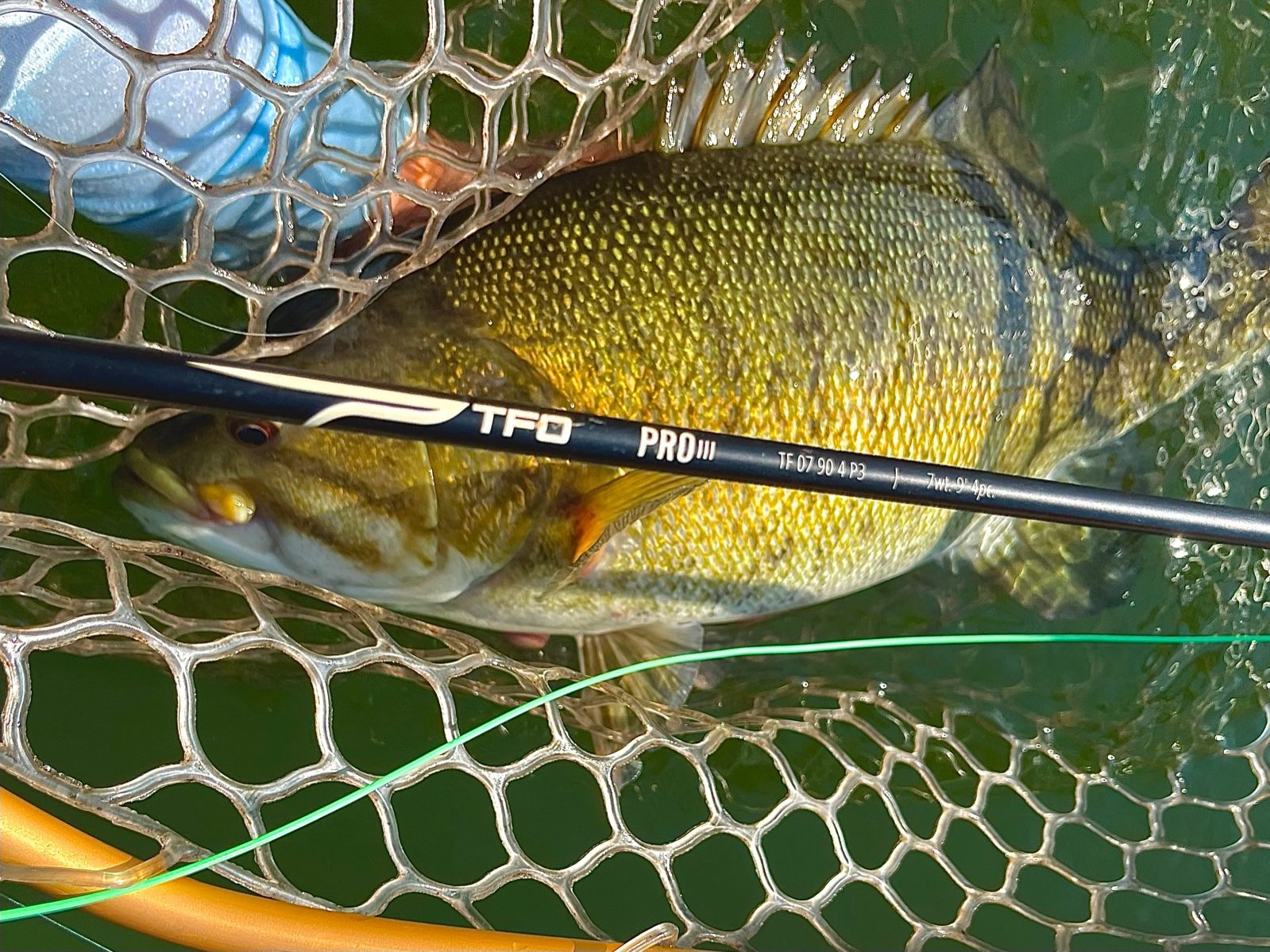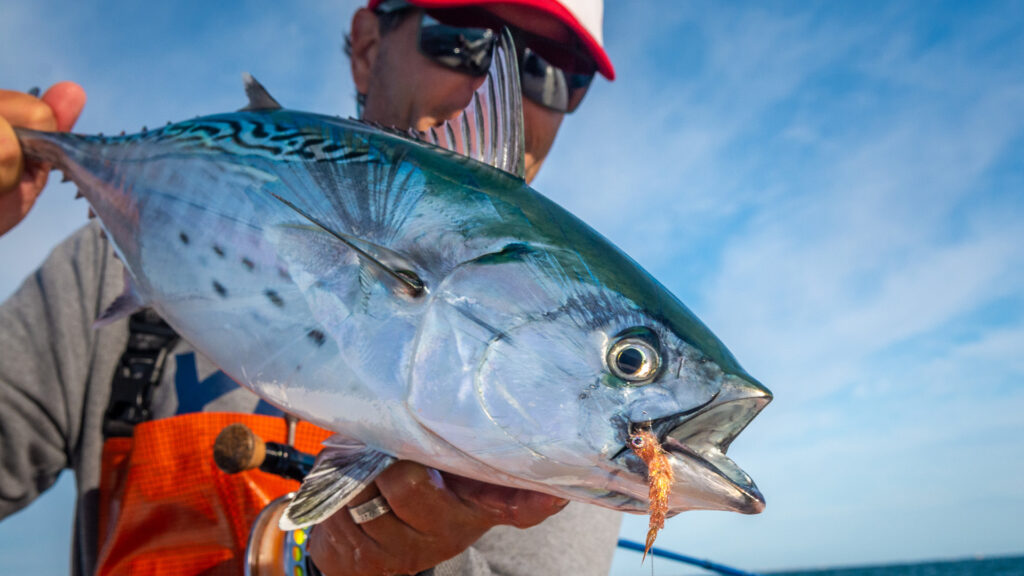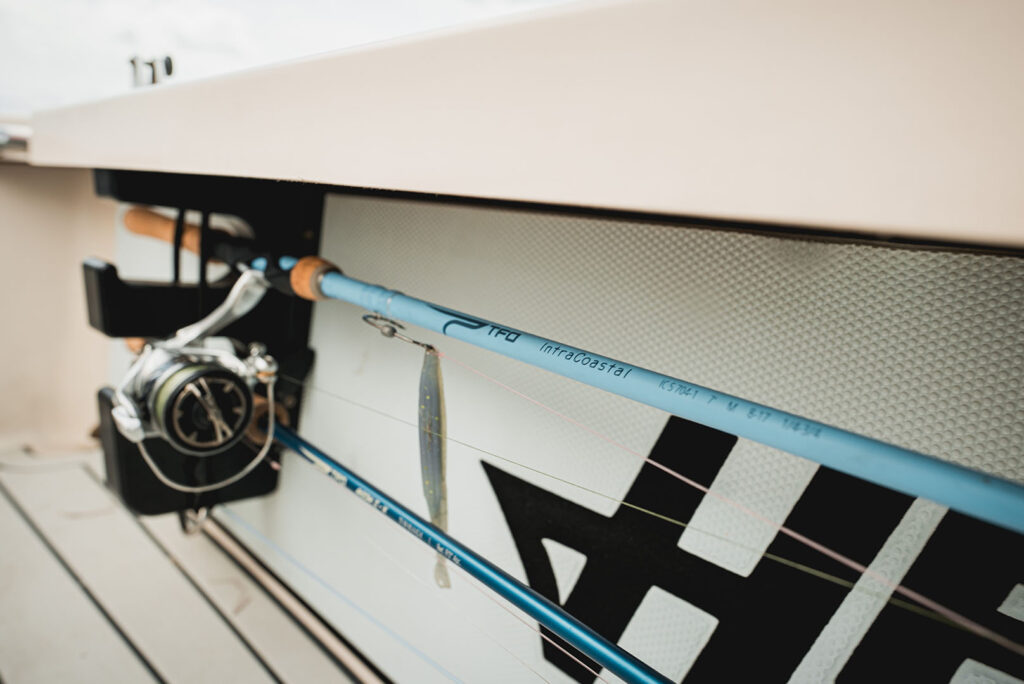There is a lot of information out there on float and fly techniques for bass in the conventional fishing world. Most of those techniques are applied on lakes and reservoirs. The float and fly technique has been around the southeast for years, but river fishermen have mostly used conventional fishing methods to target smallies in the tailwaters.
For years, conventional fishermen have used jigs in the Tennessee reservoirs to catch trophy smallmouth, but they are rarely fished in rivers or tailwaters under a float. One conventional technique that is popular with local guides that produces big smallmouth in the cooler months in Tennessee is drifting live shad under bobbers. These guides catch some of the biggest smallies in the Tennessee River system using this simple technique.
Another cold weather technique used to target smallmouth in the Upper Midwest is swimming hair jigs. “Swimming hair”, as they say, is a common way to catch big smallmouth in the cooler months. Using these ideas and techniques from the trout nymphing world, smallies can be targeted with fly rods in a similar way in southeastern rivers and tailwaters.

There is not much information out there on nymphing for bass with a fly rod in rivers, even though smallmouth bass readily take flies this way. // Photo: Adam Kennon
There is not much information out there on nymphing for bass with a fly rod in rivers, even though smallmouth bass readily take flies this way. There are guys in California using the technique on reservoirs to win bass tournaments, but the float and fly doesn’t get talked about much on southeastern smallmouth rivers.
Using a fly rod to employ the float and fly technique in rivers has its advantages. You can present lighter flies than conventional fishermen, and you can mend your line to reduce drag on your fly in the swift currents of the river. Slowing down, getting it deep, and keeping it deep in the strike zone are key for catching those sluggish cold weather giants. Less is more with this technique. The metabolic rates of smallmouth bass slow down as the water temps drop. They don’t want to move unless it’s worth the calories. Slowing down can tease them out of their deep lair.

The TFO Pro III 7wt is stiff enough to turn over the floating rigs, but soft enough to protect the light leaders from the big fish trying to break them. // Photo: Adam Kennon
Set- Ups
A 7 weight fly rods is best since it lets you turn over the heavy floating rigs. I like using the TFO Pro III 9′ 7wt for this technique. It’s stiff enough to turn over the floating rigs, but soft enough to protect the light leaders from the big fish trying to break them. A floating line is essential for mending your line in the flow of the river to create drag-free drifts. From the tip of the fly line I add 3-5 inches of 20 pound mono with a perfection loop, or an Albright knot. The mono is stiff, floats and turns over the foam indicator. The indicator can be made of cylinder foam and a shank, or purchased from a fly shop. From the indicator I tie on 8 to 12 feet of untapered leader. I will use an 8-10 pound conventional fluorocarbon line as my leader. Using a loop knot on your fly, and the small diameter untapered leader the fly will sink fast in the flow of the river.
Flies
The flies I typically throw sink fast and have a big profile. That usually means they need to be sparsely tied with marabou bodies and bucktail or rabbit strip tails. I tie my own flies in minnow and crayfish patterns. Weights can range 1/32, 1/16, or even ⅛ on the highwater or windy days. For colors, I like UV white, or black, on overcast days, and white with flashy silver on sunny days. Occasionally, I will mix in some gray and olive on the sunny, clear water days. A light wire, wide gap hook can help set the hook with the subtle takes and the slack floating lines. 60 and 90 degree jig hooks in the 2/0 to 3/0 range can increase hook-ups. You don’t need 2/0 and 3/0 light wire hooks. Smaller size #4 – #1 hooks will get the job done.

Assortment of smallmouth bass flies. // Photo: Adam Kennon
Technique
I look for deep sections of the river with flow and rocky shorelines where I know I can make long drifts over shoals and boulders. I try to get within casting distance of the shore so that my fly can drift past fish sitting on the ledges and hips of the river bank. If I am fishing tailwater, I might be in the middle of the river. I will start a drift alternating cast on either side of the boat allowing the fly to drift and swing behind the boat with the current. Casting 60-90 degrees out allows the foam indicator and boat to drift at the same speed. You want your indicator downstream of the boat. This helps keep as tight of a line as possible so when the indicator sinks you can get a quick hook set. Once the fly sinks, long drifts can be made along shorelines with the fly hanging in the strike zone. This technique can be used from a drift boat in deeper stretches of smaller streams. The idea is to go slow and let the fly do the work. Let the fly get as deep as possible. An occasional knick on the bottom is ok, but you don’t want to drag the fly. The hook set is exactly like a trout set. Lift the rod tip, strip fast and stay tight. Once the fish has taken the fly, the light wire hook should set and prevent the fish from throwing the hook when it goes airborne.

The float and fly technique excels when the water temps hit the 40-50 degree mark, although it can be used year-round in tailwater fisheries for smallmouth bass. // Photo: Adam Kennon
The float and fly excels when the water temps hit the 40-50 degree mark, although it can be used year-round in tailwater fisheries. Fish are usually active and feeding during the middle of the day in the colder months so the hours between 11-4pm are best for float and fly. I have to admit, the float and fly technique may not be for everyone and it’s not the most engaging way to fish, but it’s fun to target the pockets of slower moving water along the banks knowing there are big fish looking for an easy meal. On those colder days, the float and fly can be the only tool in your bag that gets the job done. Try it out and see if it’s for you.
Blog and photos by TFO Ambassador Adam Kennon (@tnriversmallmouth).

Adam Kennon with a trophy sized East Tennessee smallmouth bass caught on the TFO Pro III 7wt fly rod. // Photo: Adam Kennon
![]()






